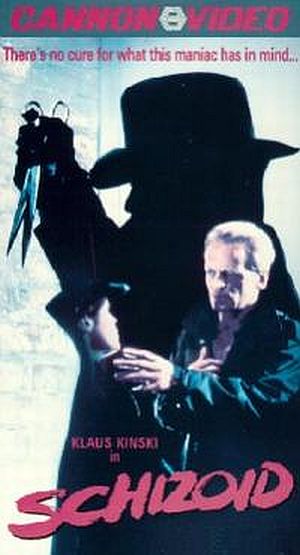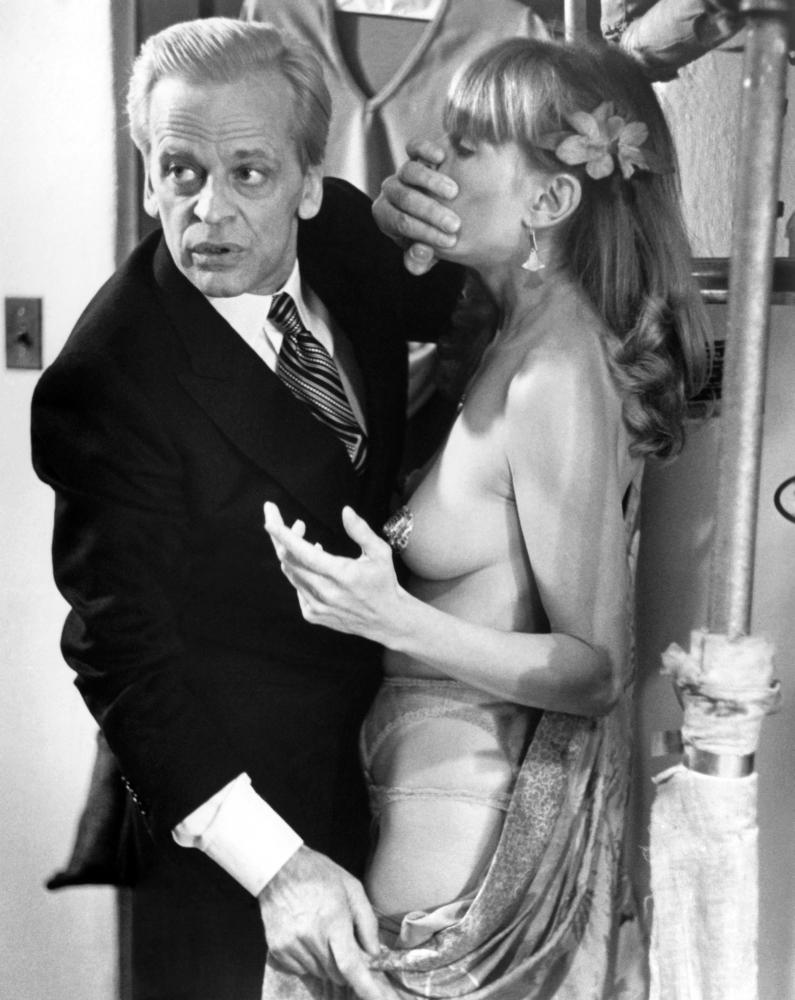Dir: David Paulsen
Star: Marianna Hill, Klaus Kinski, Craig Wasson, Donna Wilkes
 Advice columnist Julie (Hill) is increasingly concerned by a steady flow of apparently psychotic messages cut out of newspapers. Who is behind them? Could it be someone from the therapy group that she attends, such as the obsessive handyman (played, oddly, by Christopher Lloyd of Back to the Future fame)? Maybe her ex-husband (Wasson)? Or is the head of the therapy group, Dr. Pieter Fales (Kinski)? Perhaps even his whiny teenage daughter (Wilkes)? The police initially refuse to do anything, but even they are forced to act, once it seems someone is acting out the fantasies described, stalking women known to Julie, and stabbing them to death with scissors.
Advice columnist Julie (Hill) is increasingly concerned by a steady flow of apparently psychotic messages cut out of newspapers. Who is behind them? Could it be someone from the therapy group that she attends, such as the obsessive handyman (played, oddly, by Christopher Lloyd of Back to the Future fame)? Maybe her ex-husband (Wasson)? Or is the head of the therapy group, Dr. Pieter Fales (Kinski)? Perhaps even his whiny teenage daughter (Wilkes)? The police initially refuse to do anything, but even they are forced to act, once it seems someone is acting out the fantasies described, stalking women known to Julie, and stabbing them to death with scissors.
I bold the name of Kinski’s character, not because he is necessarily the psycho, but since there’s some twisted genius here, casting Klaus in a slasher film like this. He is easily the most obvious candidate for the perpetrator, because who better to play a total psycho? Except, for much the same reasons, he is also the most obvious red-herring. So which is it? Hey, I’m not going to spoil it for you. Instead, I’ll say that there are echoes of Dario Argento here, with its black-gloved killer lurking and observing his victims from the shadows, before terrorizing and dispatching them. Except, of course, writer-director Paulsen doesn’t have a fraction of Argento’s visual flair, and the killings here largely progress in a flat and uninteresting fashion.
There are some interesting dynamics here, not least in the relationship between Julie and Dr. Fales, which certainly seems well over the boundaries of normally-accepted professional conduct. Admittedly, it’s not clear if she is seeing him in any genuine therapeutic capacity, or if she just hangs out at the therapy group to get fodder for her column, which reminds me of nothing more than the narrator in Fight Club. I would also have thought a psychiatrist like Fales would have a better approach to handling his daughter, Alison, who turns up to dinner wearing clothes belonging to her dead mother, and deeply resents any other woman – like Julie.
 Alison seems to flaunt her body at her father rather too much: I was kinda relieved to discover Wilkes was already in her twenties since, to give you some idea, four years later, she played a 15-year-old hooker in Angel. The mere fact he doesn’t squash this immediately makes for somewhat sleazy viewing – or more than somewhat, considering Pola’s recent accusations against her father. In addition, it’s interesting to contrast this role for Kinski, with the ones his other daughter, Nastassja, was getting around the same time (1980), which inevitably seemed to involve her with an older woman. Oh, and Fales also visits a strip-club and bangs one of the dangers, in forthright fashion, right up against the wall of the dressing-room (right). Probably safe to say that Dr Phil, he most certainly is not.
Alison seems to flaunt her body at her father rather too much: I was kinda relieved to discover Wilkes was already in her twenties since, to give you some idea, four years later, she played a 15-year-old hooker in Angel. The mere fact he doesn’t squash this immediately makes for somewhat sleazy viewing – or more than somewhat, considering Pola’s recent accusations against her father. In addition, it’s interesting to contrast this role for Kinski, with the ones his other daughter, Nastassja, was getting around the same time (1980), which inevitably seemed to involve her with an older woman. Oh, and Fales also visits a strip-club and bangs one of the dangers, in forthright fashion, right up against the wall of the dressing-room (right). Probably safe to say that Dr Phil, he most certainly is not.
This comes to a head in an argument between father and daughter which is kinda amusing, simply because we get to see Kinski on the receiving end of the kind of screaming temper tantrum, for which he became justly famous. As generally, he shows a near-complete lack of parenting skills, flapping his arms and his jaw around, with equal (lack of) effect, as his daughter shrieks at him, before locking herself in the garage and eventually careering through the wall in an automobile. To be honest, I can’t say it has too much to do with the rest of the movie, apparently having strayed in from some Lifetime original movie. However, having been through the teenage daughter thing – fortunately, without the car accident or creepy undertones – I can vouch, Paulsen got their irascible omniscience spot-on.
The film does a fairly good job at keeping you off-balance, mostly through Kinski twitchily veering between “He’s got to be the murderer” and “That’s far too blatant, he can’t possibly be the murderer.” To avoid spoilers, let’s just leave it that, and instead, I should say, I’m fairly sure “schizoid” does not actually describe any of the clinical symptoms shown by the attacker here. The title is likely just playing off other, similarly one-word slashers like Maniac from the same year, or referring back to the granddaddy of them all, Psycho. There was even another film, the not to be confused Schizo, made four years earlier, and starring Mrs. Peter Sellers, Lynn Frederick.
What’s good about Kinski’s performance is that he’s the only character who is given anything like depth. While, like all the others, he may or may not be the killer, Dr. Fales also has good and bad aspects, which sets him apart from the others, who all appear to have been given instructions to stick to one dimension in their portrayals. There are times when Fales seems almost sympathetic – a rarity for Kinski – and then, moments later, you’re convinced he’s the man who is wielding the scissors in a stabby fashion. I think the movie might have been better, or at least, more interesting, to have concentrated purely on the weird daddy-daughter dynamic Klaus has with Wilkes, rather than a pseudo-whodunnit, which we’ve seen done far too often before, and usually better.